If you’re looking to revamp your living space, it’s important to understand the different interior design styles available to you. The right style can transform your home into a warm and inviting space that reflects your personality and lifestyle. With a wide range of styles to choose from, you’re sure to find one that suits your taste and preferences.
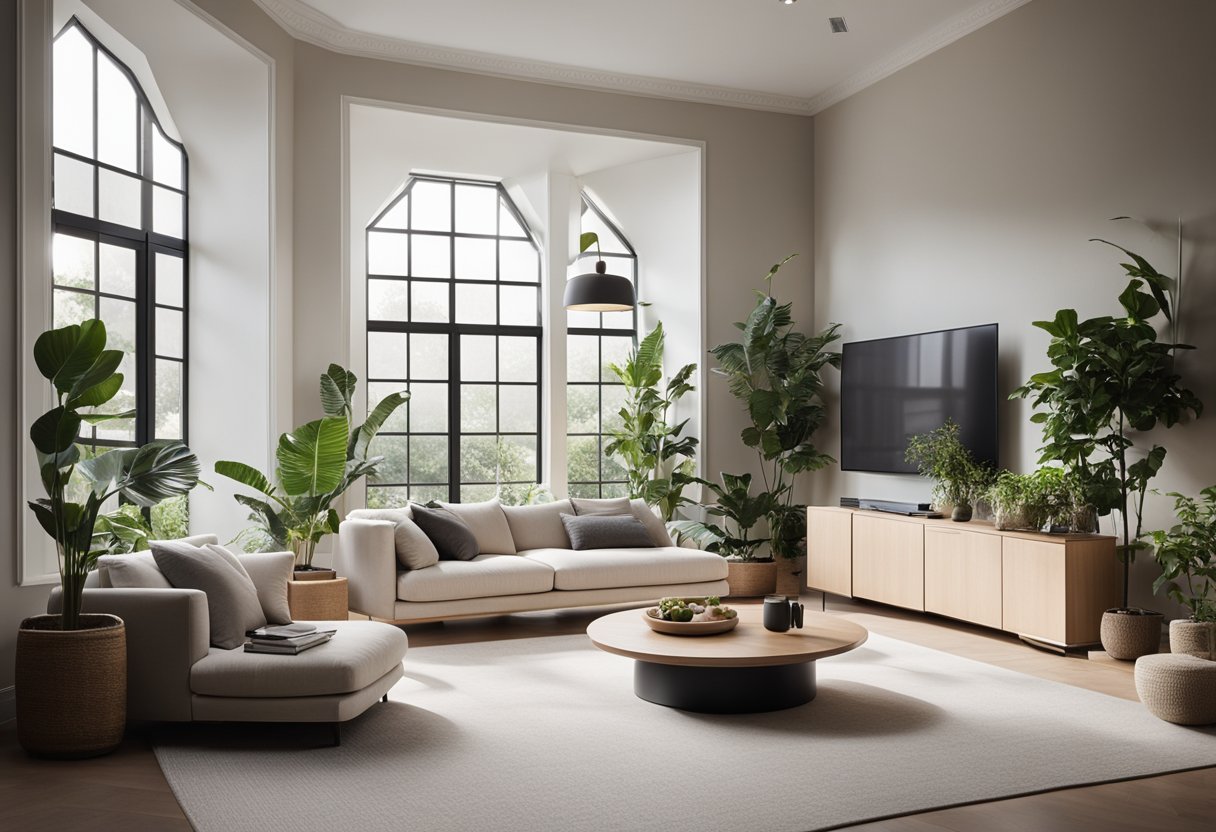
Interior design styles are influenced by historical movements, contemporary design trends, cultural and regional styles, and emerging concepts. Each style has its unique design elements, materials, and colour schemes that create a distinct look and feel. From minimalist and modern to eclectic and shabby chic, there’s a style to suit every taste and budget.
Whether you’re decorating your living room, bedroom, kitchen, or bathroom, there are different design styles to suit each room’s unique needs. From traditional and classic to contemporary and industrial, each room’s style can create a cohesive look throughout your home. With the right design elements and materials, you can personalise your space and create a home that truly reflects your style and personality.
Key Takeaways
- Understanding the different interior design styles can help you choose the right one for your home.
- Each design style has its unique design elements, materials, and colour schemes that create a distinct look and feel.
- By personalising your space with the right design elements and materials, you can create a home that truly reflects your style and personality.
Historical Influences on Interior Design
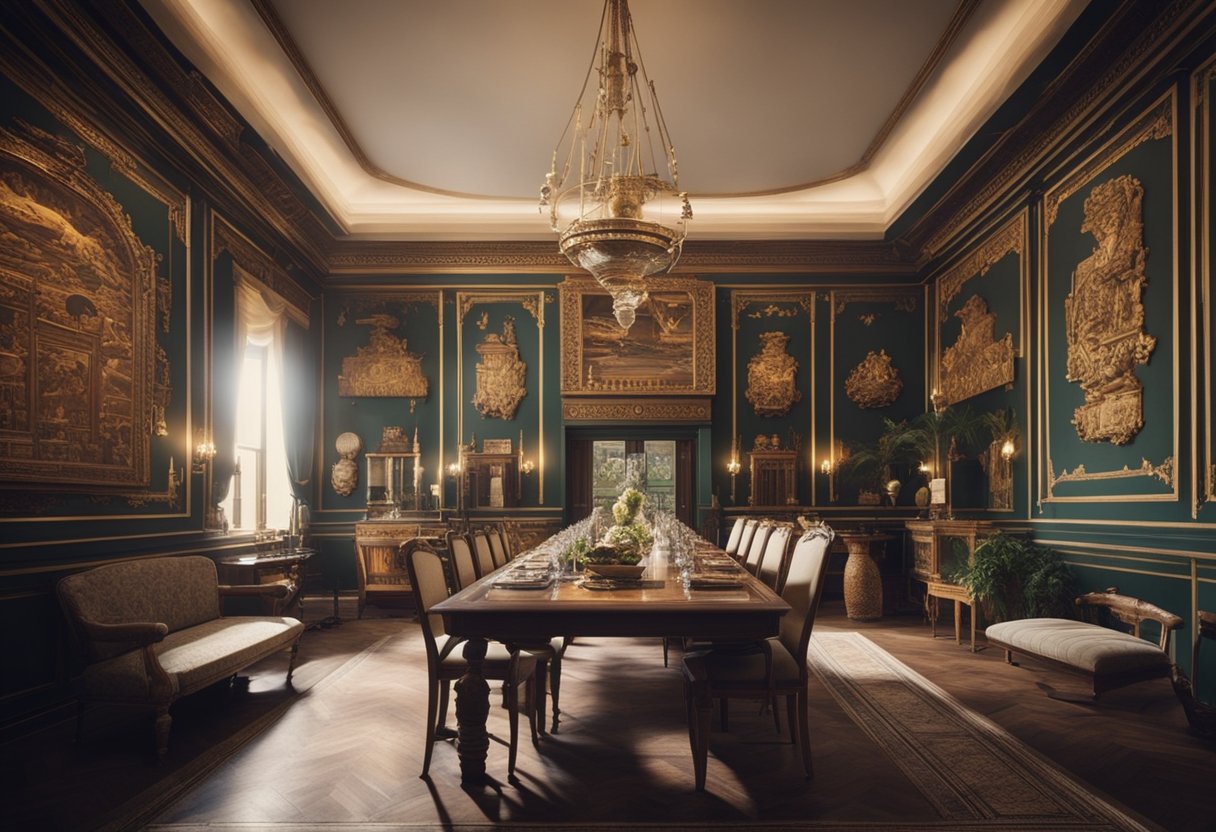
Interior design has been influenced by various cultures, styles, and eras throughout history. From the luxurious grandeur of the Victorian era to the sleek minimalism of the Bauhaus movement, each period has left its mark on interior design.
Victorian
The Victorian era, which lasted from 1837 to 1901, was a time of opulence and extravagance. Victorian interior design was characterised by rich colours, intricate patterns, and ornate furniture. Dark woods such as mahogany and walnut were popular, as were heavy drapes and elaborate carpets. The use of wallpaper became widespread during this period, with designs featuring floral patterns and intricate motifs.
Colonial
Colonial interior design is inspired by the styles of the early American settlers. This style is characterised by a mix of European and American design elements, with a focus on simplicity and functionality. Colonial interiors often feature natural materials such as wood and stone, with muted colours and simple patterns.
Mediterranean
Mediterranean interior design is inspired by the sunny, relaxed lifestyle of the Mediterranean region. This style is characterised by bright colours, natural materials, and a focus on outdoor living. Mediterranean interiors often feature terracotta tiles, wrought iron accents, and colourful textiles.
Art Deco
Art Deco interior design was popular during the 1920s and 1930s. This style is characterised by geometric shapes, bold colours, and luxurious materials such as marble and chrome. Art Deco interiors often feature sleek, streamlined furniture and dramatic lighting.
Bauhaus
The Bauhaus movement, which emerged in Germany in the early 20th century, was characterised by a focus on functionality and simplicity. Bauhaus interiors often feature clean lines, simple shapes, and a minimalist colour palette. This style has had a significant influence on modern interior design.
Mid-Century Modern
Mid-century modern interior design was popular during the 1950s and 1960s. This style is characterised by a focus on functionality and simplicity, with clean lines and simple shapes. Mid-century modern interiors often feature natural materials such as wood and leather, with bold colours and graphic patterns.
In conclusion, interior design has been influenced by a variety of styles, cultures, and eras throughout history. By understanding the characteristics of each style, you can create a space that reflects your personal taste and style.
Contemporary Design Movements
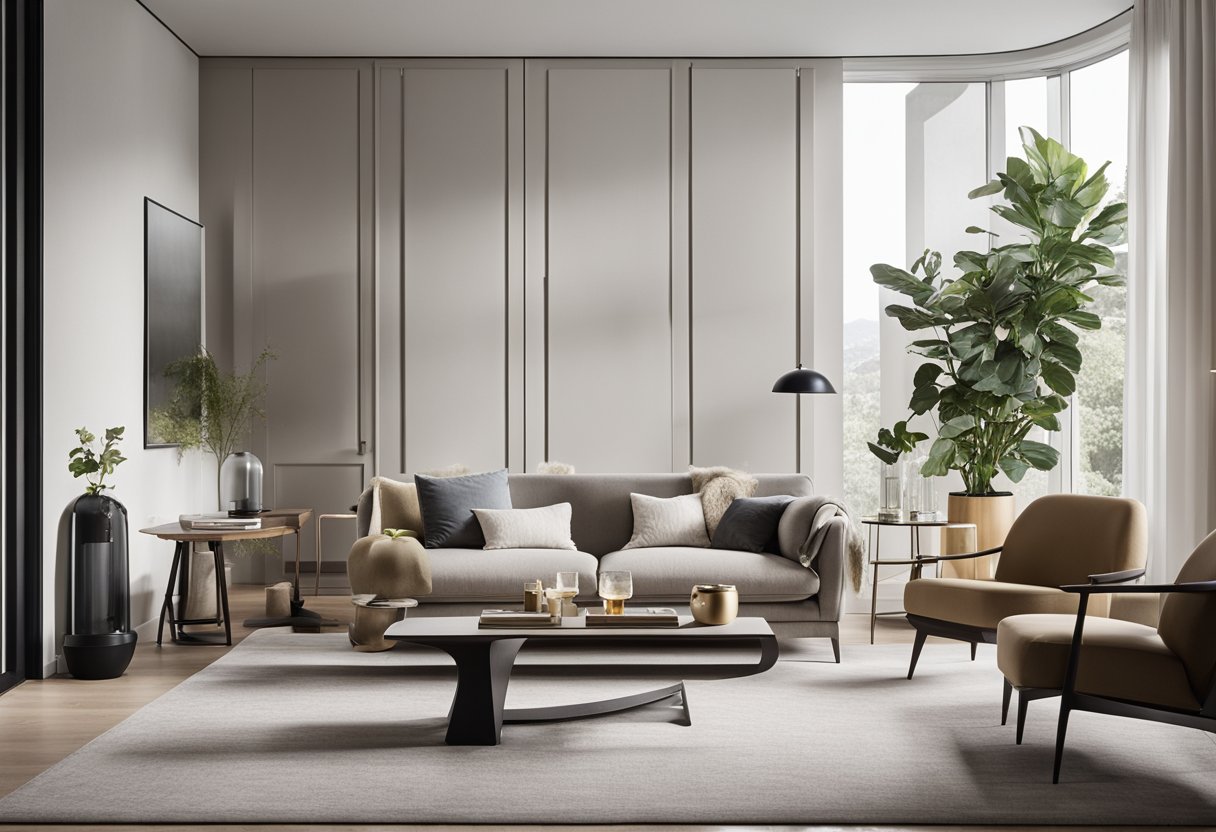
If you’re looking to update your home with a fresh, modern look, then contemporary design is the way to go. Contemporary design is an ever-evolving movement that draws inspiration from a variety of styles, including modernism, postmodernism, neo-industrial, Memphis, and minimalism.
Modernism
Modernism is a design movement that originated in the early 20th century and is still influential today. It is characterized by a focus on simplicity, functionality, and minimalism. Modernist designs often feature clean lines, geometric shapes, and a lack of ornamentation.
Postmodernism
Postmodernism is a design movement that emerged in the 1970s and is characterized by a rejection of modernism’s focus on simplicity and functionality. Postmodernist designs often feature bright colours, bold patterns, and a mix of different styles and materials.
Neo-Industrial
Neo-industrial design draws inspiration from the industrial aesthetic of factories and warehouses. It often features raw materials such as concrete, steel, and exposed brick, as well as utilitarian objects like metal pipes and gears.
Memphis
Memphis is a design movement that emerged in the 1980s and is characterized by bright colours, bold patterns, and a playful, eclectic style. Memphis designs often feature geometric shapes and asymmetrical forms.
Minimalism
Minimalism is a design movement that emphasizes simplicity and functionality. It is characterized by a focus on clean lines, neutral colours, and a lack of ornamentation. Minimalist designs often feature natural materials such as wood and stone, and they prioritize function over form.
Incorporating contemporary design elements into your home can help you create a space that feels fresh, modern, and stylish. Whether you prefer the simplicity of modernism or the boldness of postmodernism, there’s a contemporary design movement that’s perfect for you.
Popular Interior Design Styles
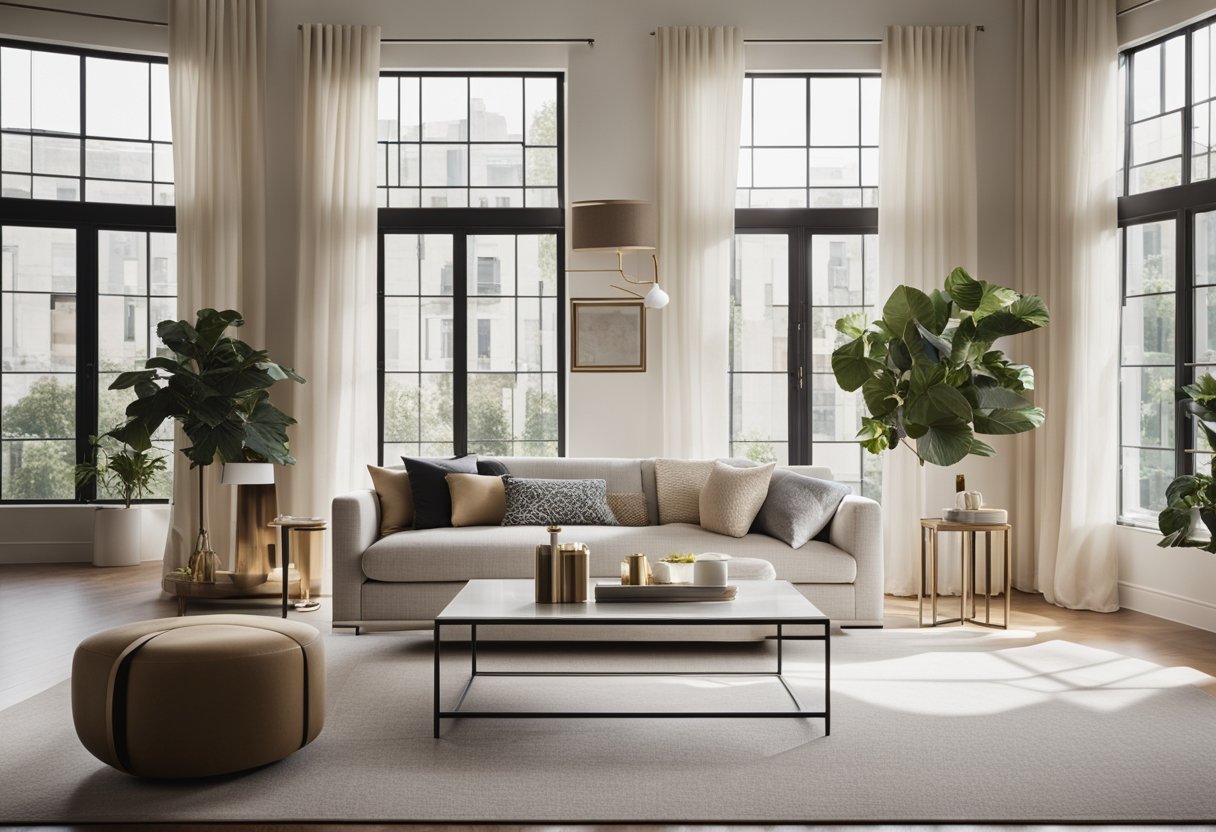
When it comes to interior design, there are many different styles to choose from. Each style has its own unique characteristics that make it stand out. In this section, we will explore some of the most popular interior design styles and what makes them special.
Scandinavian
Scandinavian design is all about simplicity and minimalism. This style is characterized by clean lines, neutral colours, and natural elements. Wood is a key material in Scandinavian design, and it is often used to create warmth and texture. This style is perfect for those who want a calm and peaceful living space.
Industrial
Industrial design is inspired by old factories and warehouses. This style is characterized by raw materials such as metal, concrete, and brick. Industrial design is all about functionality, and it is perfect for those who want a practical and durable living space.
Eclectic
Eclectic design is all about mixing and matching different styles and elements. This style is characterized by bold colours, patterns, and textures. Eclectic design is perfect for those who want a living space that is full of personality and character.
Bohemian
Bohemian design is all about free-spiritedness and creativity. This style is characterized by bold colours, patterns, and natural elements. Bohemian design is perfect for those who want a living space that is full of energy and life.
Rustic
Rustic design is inspired by the countryside. This style is characterized by natural materials such as wood and stone. Rustic design is all about creating a warm and welcoming living space.
Farmhouse
Farmhouse design is inspired by traditional farmhouses. This style is characterized by natural materials such as wood and metal. Farmhouse design is all about creating a cozy and inviting living space.
Coastal
Coastal design is inspired by the beach. This style is characterized by light colours, natural materials, and nautical elements. Coastal design is perfect for those who want a living space that is calm and relaxing.
Japandi
Japandi design is a fusion of Japanese and Scandinavian design. This style is characterized by simplicity, functionality, and natural elements. Japandi design is perfect for those who want a living space that is calm and peaceful, yet practical and functional.
In conclusion, there are many different interior design styles to choose from. Whether you prefer a simple and minimalistic living space or a bold and eclectic one, there is a style out there that is perfect for you.
Design Elements and Materials
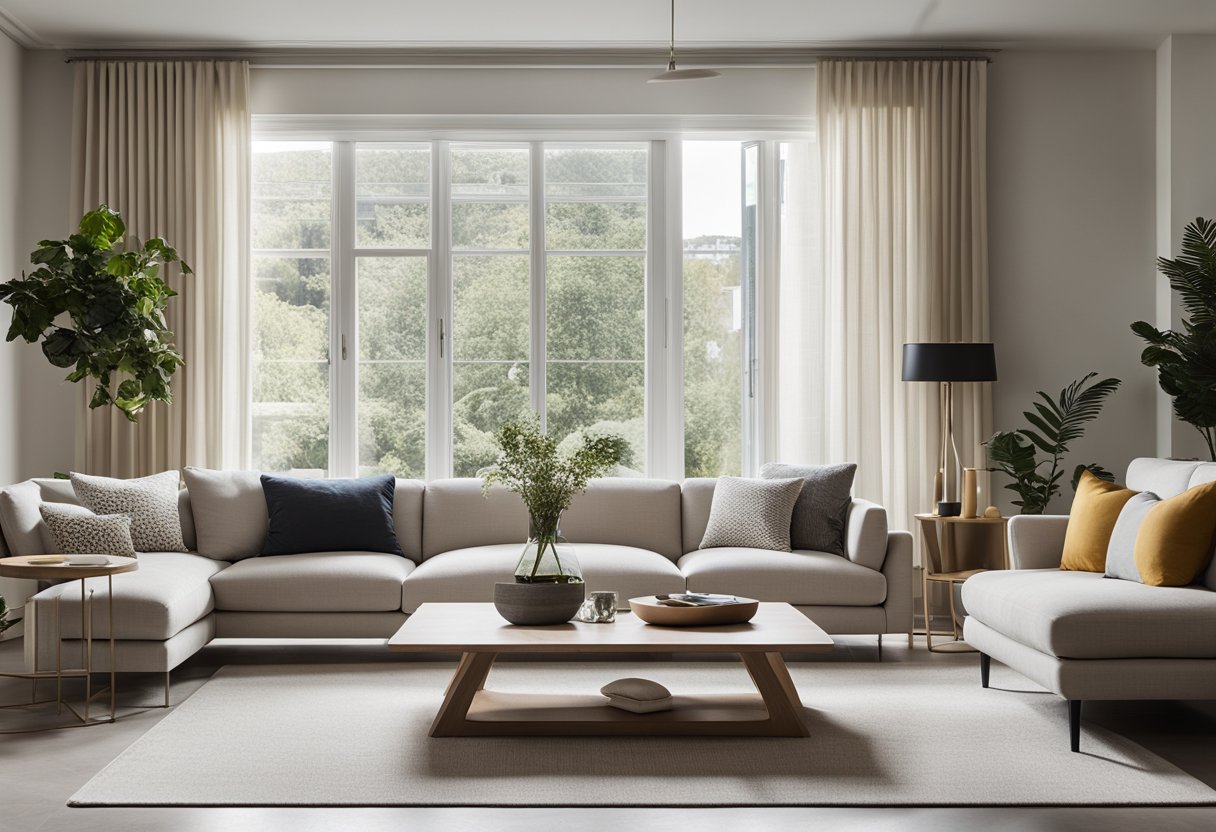
When it comes to interior design, choosing the right design elements and materials can make all the difference. Here are some key design elements and materials to consider when designing your space.
Furniture
Furniture is one of the most important design elements in any space. When choosing furniture, consider the style of the space and the function of the furniture. For example, if you’re designing a modern living room, you may want to consider a sleek, minimalist sofa. If you’re designing a traditional bedroom, you may want to consider a four-poster bed.
Textures and Patterns
Textures and patterns can add depth and interest to any space. When choosing textures and patterns, consider the overall style of the space and the mood you want to create. For example, if you’re designing a rustic kitchen, you may want to consider a textured stone backsplash. If you’re designing a bohemian bedroom, you may want to consider a bold, patterned rug.
Natural Elements
Bringing natural elements into a space can create a calming and relaxing atmosphere. When choosing natural elements, consider the overall style of the space and the mood you want to create. For example, if you’re designing a beachy living room, you may want to consider a driftwood coffee table. If you’re designing a modern bathroom, you may want to consider a sleek, stone bathtub.
Lighting
Lighting is an essential design element that can set the mood of a space. When choosing lighting, consider the function of the space and the mood you want to create. For example, if you’re designing a cozy reading nook, you may want to consider a warm, dimmable lamp. If you’re designing a bright and airy kitchen, you may want to consider a sleek, modern pendant light.
Flooring
Flooring is another important design element that can set the tone for a space. When choosing flooring, consider the overall style of the space and the function of the room. For example, if you’re designing a traditional dining room, you may want to consider a hardwood floor. If you’re designing a modern bathroom, you may want to consider a sleek, tile floor.
Incorporating design elements and materials that match the overall style of your space can help create a cohesive and inviting atmosphere. Whether you’re designing a modern living room or a traditional bedroom, choosing the right design elements and materials can help bring your vision to life.
Design Styles by Room
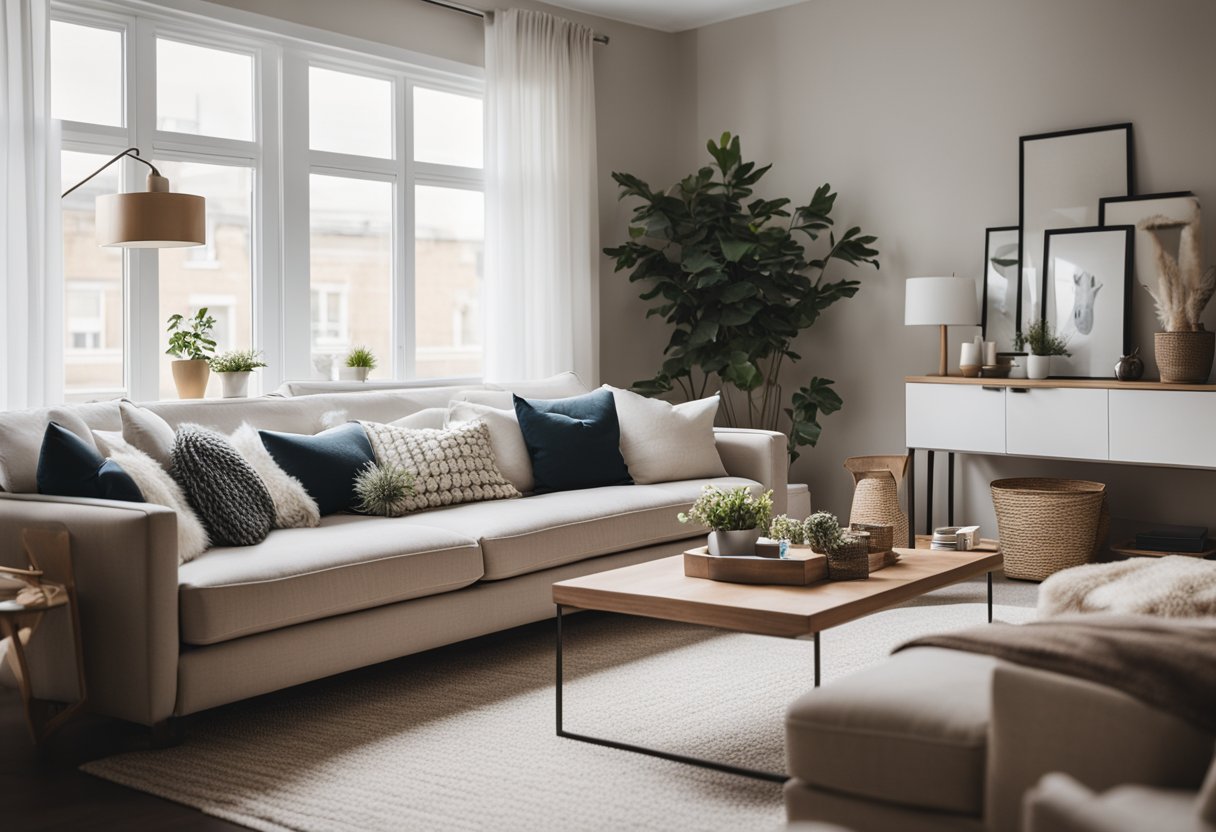
When it comes to designing your living space, choosing the right interior design style can make all the difference. Here are some popular design styles to consider for each room in your home:
Living Room
Your living room is the heart of your home, where you entertain guests, relax after a long day, and spend quality time with your family. To create a warm and inviting atmosphere, consider a classic style like Traditional or Country. These styles often feature comfortable furniture, soft lighting, and warm colours.
If you prefer a more modern look, try a Contemporary or Minimalist style. These styles feature clean lines, neutral colours, and simple furniture. To add some personality to your space, consider adding a bold accent piece like a colourful rug or a statement piece of art.
Bedroom
Your bedroom is your personal sanctuary, where you go to rest and recharge. To create a peaceful and relaxing atmosphere, consider a style like Scandinavian or Boho. These styles often feature natural materials, light colours, and soft textures.
If you prefer a more luxurious look, try a style like Art Deco or Hollywood Regency. These styles feature bold colours, rich fabrics, and glamorous details like chandeliers and mirrored furniture.
Kitchen
Your kitchen is the heart of your home, where you prepare meals and gather with family and friends. To create a warm and welcoming atmosphere, consider a style like Farmhouse or Rustic. These styles often feature natural materials like wood and stone, as well as warm colours and vintage accents.
If you prefer a more modern look, try a style like Industrial or Minimalist. These styles feature sleek lines, metal accents, and neutral colours. To add some personality to your space, consider adding a colourful backsplash or a statement light fixture.
Bathroom
Your bathroom is your personal oasis, where you go to relax and unwind. To create a spa-like atmosphere, consider a style like Zen or Coastal. These styles often feature natural materials like wood and stone, as well as soft colours and textures.
If you prefer a more luxurious look, try a style like Art Deco or Hollywood Regency. These styles feature bold colours, rich fabrics, and glamorous details like chandeliers and mirrored furniture. To add some personality to your space, consider adding a colourful shower curtain or a unique piece of artwork.
No matter which style you choose, be sure to incorporate elements like comfortable furniture, soft lighting, and unique accents to create a space that is both functional and beautiful.
Cultural and Regional Styles
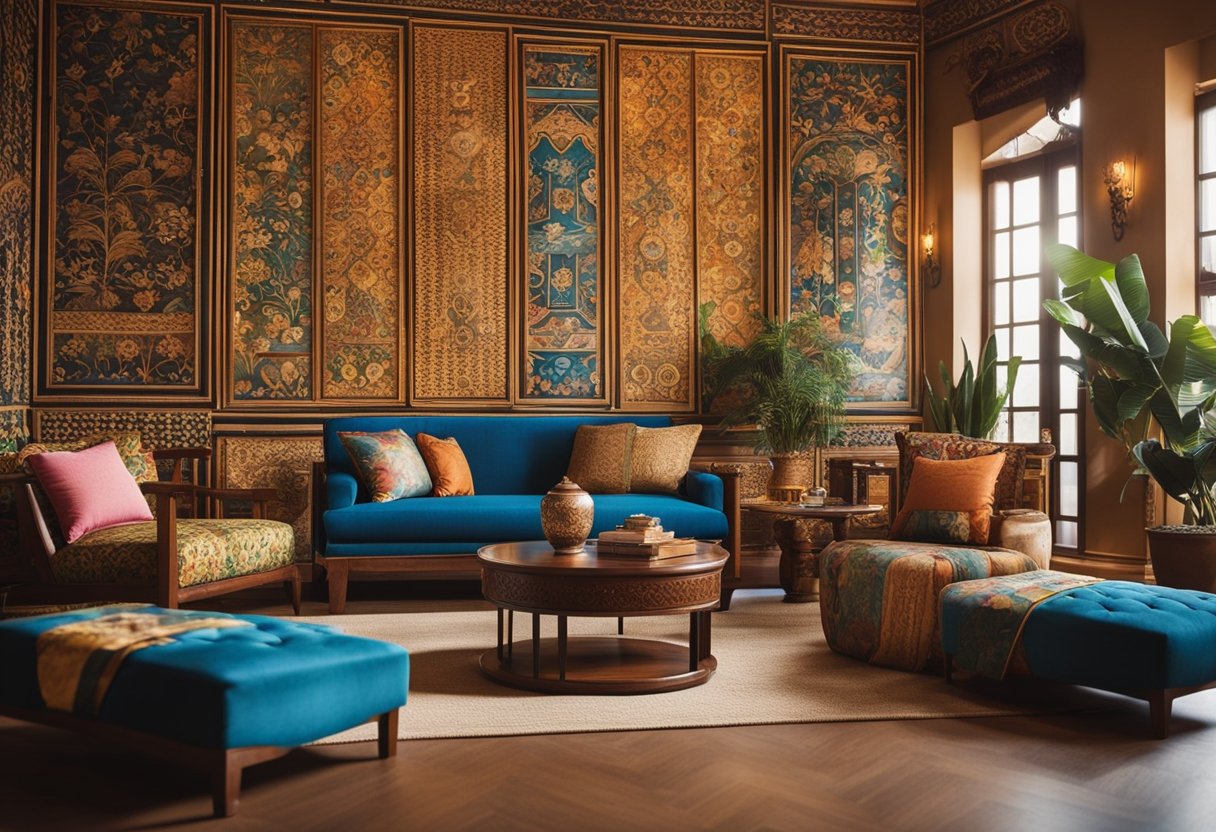
If you’re looking to add some personality to your home, you might want to consider incorporating some cultural and regional styles into your interior design. From Asian Zen to French Country, there are a variety of styles to choose from that can add a unique touch to your home.
Asian Zen
Asian décor is all about simplicity, minimalism, and balance. This style is heavily influenced by the Zen philosophy, which emphasises the importance of being present in the moment and finding peace in simplicity. Asian Zen interior design often features natural materials like wood and stone, as well as neutral colours like beige, white, and black. This style is perfect for creating a calming and relaxing atmosphere in your home.
French Country
French Country interior design is all about creating a warm and inviting atmosphere that feels like home. This style is heavily influenced by the rustic charm of the French countryside and often features natural materials like wood and stone, as well as warm colours like red, yellow, and gold. French Country style is perfect for creating a cosy and welcoming atmosphere in your home.
Southwestern
Southwestern interior design is heavily influenced by the culture and traditions of the American Southwest. This style often features warm colours like orange, red, and brown, as well as natural materials like wood and leather. Southwestern style is perfect for creating a warm and inviting atmosphere in your home, and is particularly popular in areas with a desert climate.
Scandinavian
Scandinavian interior design is all about simplicity, functionality, and minimalism. This style is heavily influenced by the natural beauty of the Scandinavian landscape, and often features natural materials like wood and stone, as well as neutral colours like white, grey, and beige. Scandinavian style is perfect for creating a clean and modern atmosphere in your home.
No matter which cultural or regional style you choose, incorporating these styles into your interior design can add a unique touch to your home and make it feel truly personalised.
Emerging Trends and Concepts
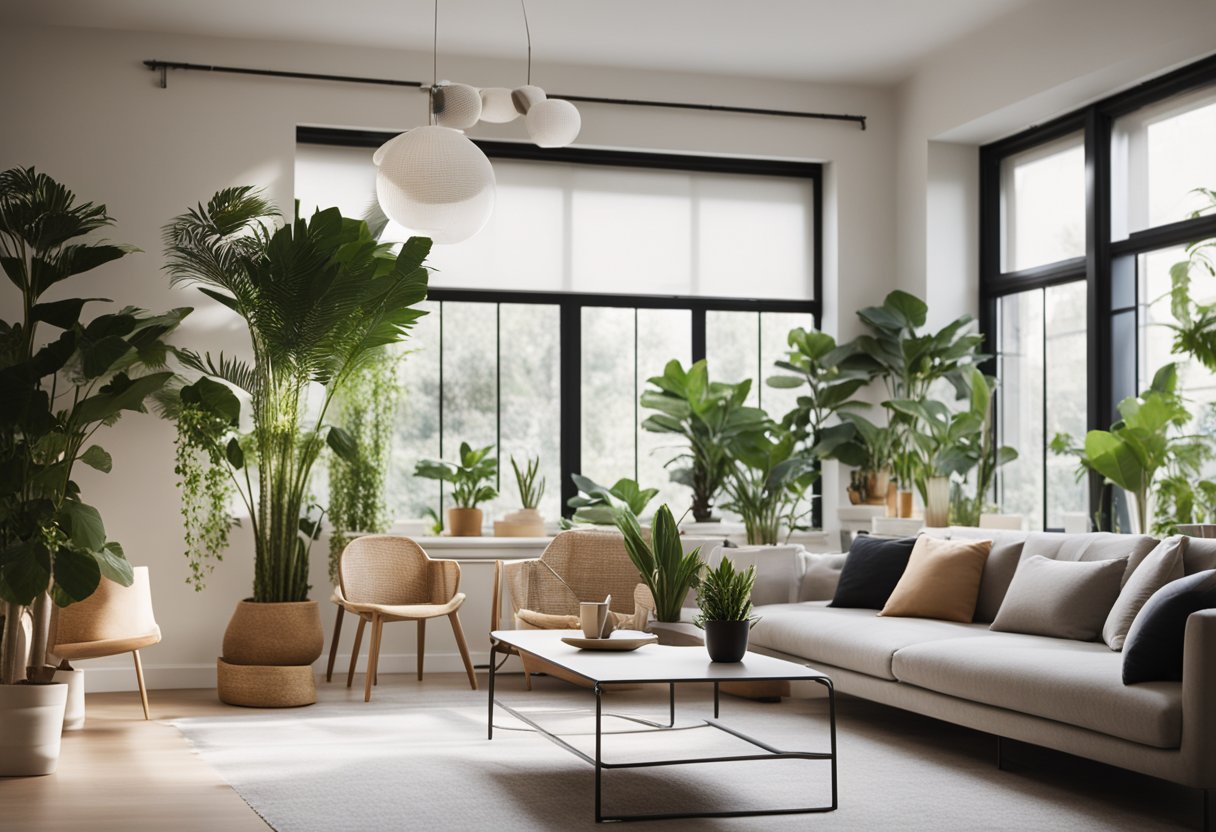
In the world of interior design, emerging trends and concepts are constantly evolving, blending new ideas with timeless classics. Here are some of the latest trends to keep an eye on:
Sustainable Design
Sustainable design is becoming increasingly popular, as more and more people are looking for ways to reduce their carbon footprint. This trend involves using eco-friendly materials, such as bamboo, reclaimed wood, and recycled plastic, to create furniture and decor that is both stylish and environmentally conscious.
When it comes to sustainable design, it’s important to consider the entire lifecycle of a product, from production to disposal. This means choosing materials that are renewable, biodegradable, and non-toxic, as well as designing products that can be easily disassembled and recycled.
Smart Homes
With the rise of smart technology, it’s no surprise that smart homes are becoming a major trend in interior design. Smart home technology allows you to control everything from your lighting to your thermostat with just a few taps on your phone.
Smart home devices can also be used to create a more comfortable and efficient living space. For example, you can install smart blinds that adjust automatically based on the time of day, or a smart fridge that tells you when you’re running low on groceries.
Gender-Neutral Design
Gender-neutral design is a trend that’s gaining popularity as people look for ways to create more inclusive and welcoming spaces. This trend involves using neutral colours, such as beige, grey, and white, as well as non-gendered materials, such as wood and metal.
Gender-neutral design also involves creating spaces that are flexible and adaptable, so that they can be used by people of all ages and abilities. This means designing spaces that are easy to navigate, with wide doorways and open floor plans.
Overall, emerging trends in interior design are all about creating spaces that are both functional and beautiful, while also being mindful of our impact on the environment and our fellow human beings. Whether you’re into feng shui, hygge, wabi-sabi, or just your own personal style, there’s a trend out there for everyone.
Personalising Your Space
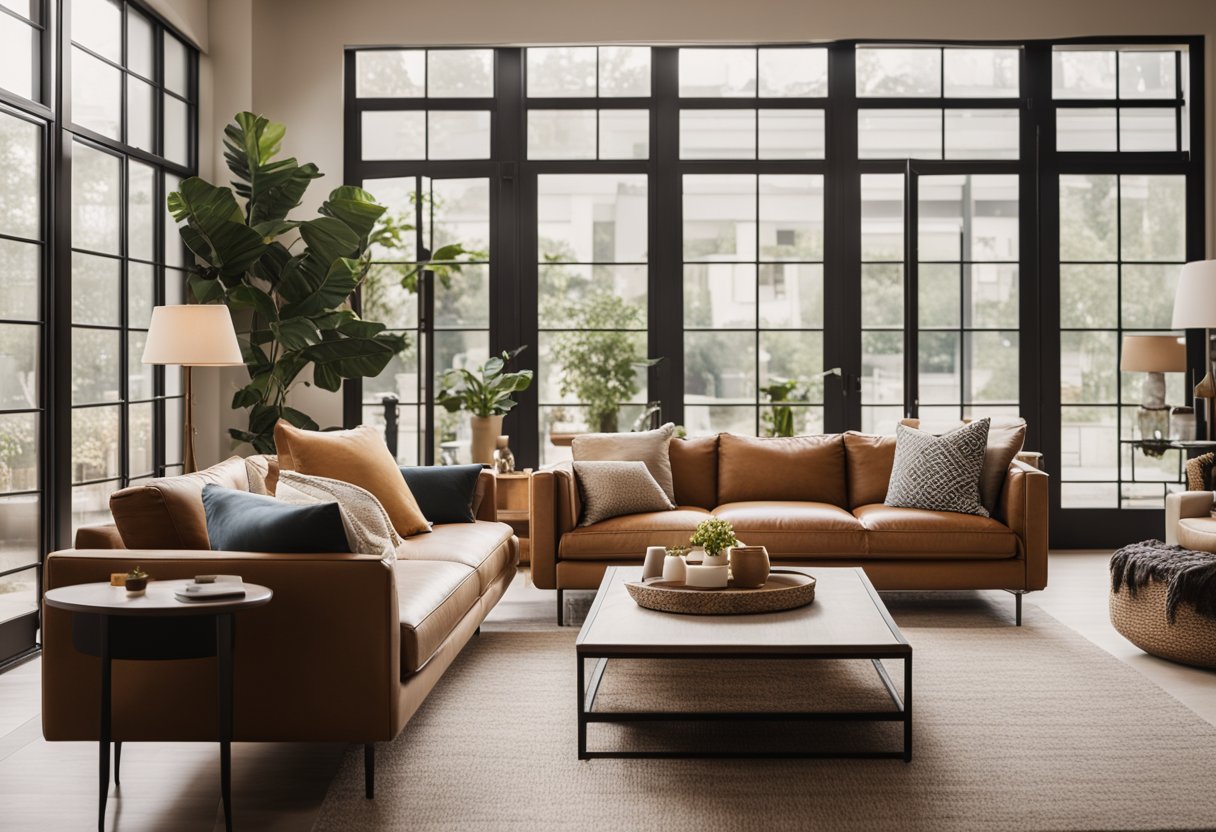
Your home should be a reflection of your personality and style. It’s where you spend most of your time, so it’s important to create a space that makes you feel comfortable and happy. Here are some tips on how to personalise your space:
Incorporating Personal Style
Personal style is the foundation of any interior design project. It’s what sets your space apart and makes it unique. Whether you’re a fan of maximalist, Hollywood glam, shabby chic, jungalow, wabi-sabi, midcentury, vintage furniture, art moderne, regency, or any other style, it’s important to incorporate your personal style into your home decor.
To incorporate your personal style, start by identifying the colours, patterns, and textures that you love. You can then use these elements to create a cohesive look throughout your home. Consider adding accent pieces, such as throw pillows, rugs, and artwork, that reflect your personal style.
DIY and Customisation
DIY and customisation are great ways to personalise your space. They allow you to create one-of-a-kind pieces that reflect your personal style. You can customise furniture, such as painting a dresser or adding new hardware to a cabinet. You can also create your own artwork, such as a canvas painting or a wall hanging.
Another way to customise your space is to create your own decor pieces. For example, you can create a DIY headboard for your bed or a customised shelving unit for your living room. The possibilities are endless, and the result will be a space that is truly unique to you.
Art and Accessories
Art and accessories are the finishing touches that can really make your space feel personalised. Consider adding artwork that reflects your personal style, such as a vintage poster or a modern print. You can also add accessories, such as vases, candles, and picture frames, that reflect your personal style.
When it comes to art and accessories, it’s important to choose pieces that work together to create a cohesive look. Consider the colours, patterns, and textures of each piece to ensure that they complement each other. With the right art and accessories, you can create a space that truly reflects your personal style and taste.
Personalising your space is all about creating a space that makes you happy and reflects your personality. By incorporating your personal style, DIY and customisation, and art and accessories, you can create a space that is truly unique to you.
Frequently Asked Questions
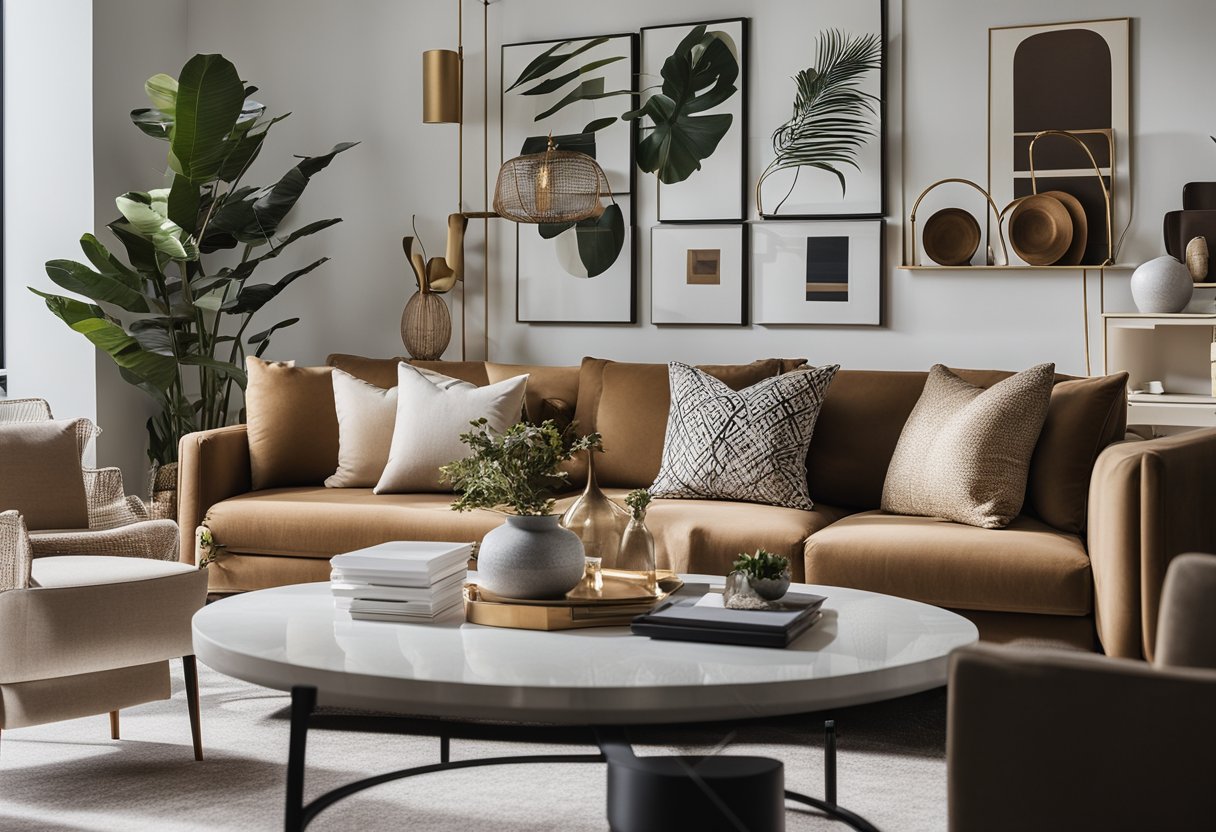
What are the key elements of classic interior design?
Classic interior design is characterised by a timeless and elegant style that is often associated with luxury and sophistication. Key elements of classic interior design include ornate furniture, intricate details, and rich colours. Classic design often features a neutral colour palette, but can also incorporate bold accent colours.
How can I identify my personal interior design style?
Identifying your personal interior design style involves taking a closer look at your preferences and lifestyle. Consider your favourite colours, patterns, and textures, as well as your daily routine and the functionality of your space. You can also look for inspiration in magazines, online, or by visiting showrooms.
What are the latest trends in modern home decor?
Modern home decor is all about simplicity, clean lines, and a minimalist approach. The latest trends in modern home decor include natural materials, such as wood and stone, as well as bold geometric patterns and metallic accents. Neutral colour palettes with pops of bright colours are also popular in modern decor.
Which interior design themes are best suited for small spaces?
When designing for small spaces, it is important to choose themes that make the most of the space available. Minimalist and modern styles work well in small spaces, as they tend to be uncluttered and streamlined. Scandinavian design is also a popular choice, as it focuses on functionality and simplicity.
How do colour schemes impact the mood of a room?
Colour schemes can have a significant impact on the mood of a room. Warm colours, such as red and orange, can create a cosy and inviting atmosphere, while cool colours, such as blue and green, can create a calming and relaxing environment. Neutral colours, such as beige and grey, can create a sense of balance and harmony.
What are the distinguishing features of traditional interior decor?
Traditional interior decor is characterised by a classic and elegant style that is often associated with formal settings. Distinguishing features of traditional decor include ornate furniture, rich colours, and intricate details. Traditional design often features a neutral colour palette, but can also incorporate bold accent colours.


